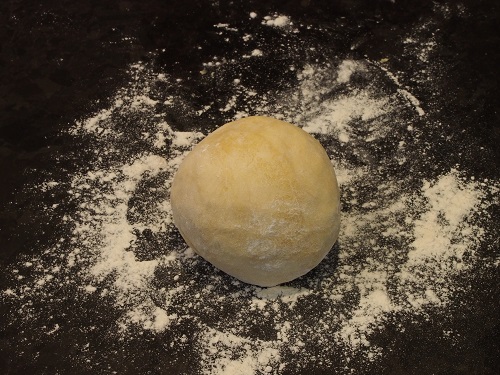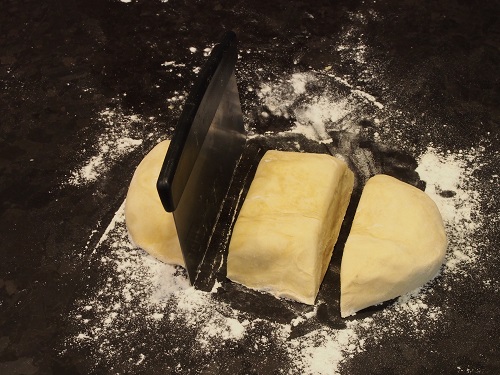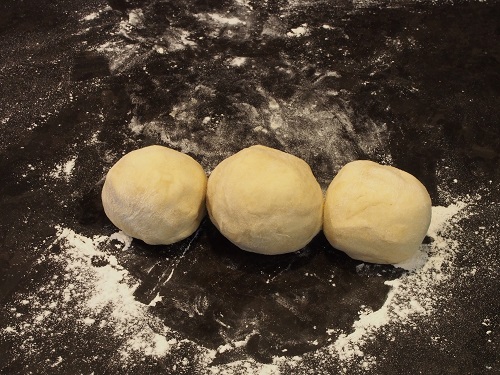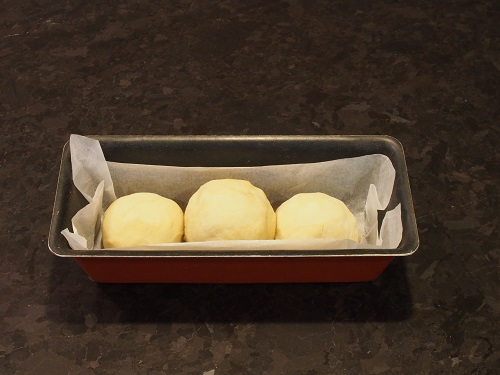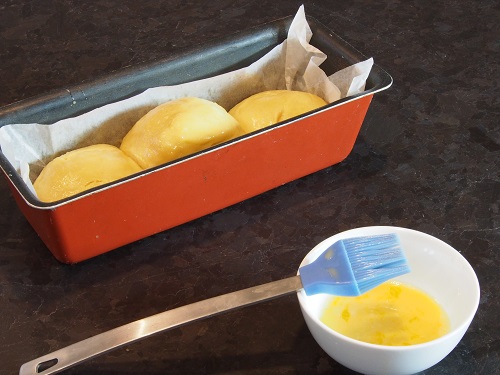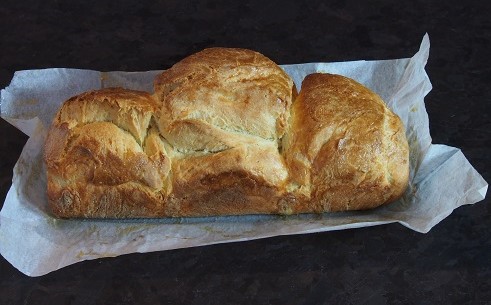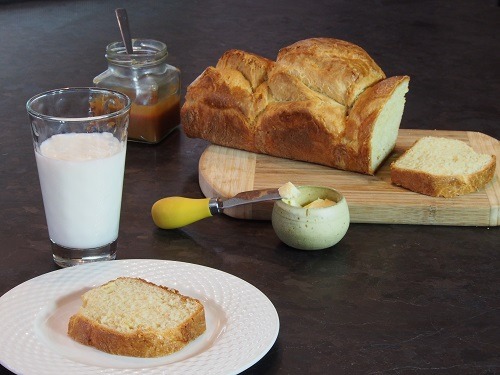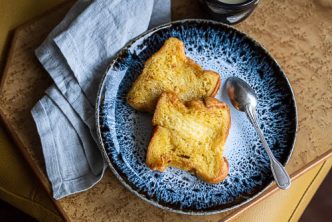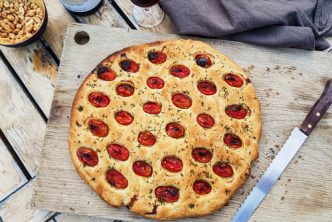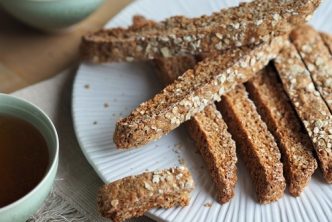Brioches are mainly made of flour, eggs, and butter, LOTS of butter! The question is how can Nanterre style brioche become so aerated with so much fat? The art consist in mixing the dough for a long moment.
The word brioche even comes from this: brier means TO crush in former French dialect, referring to the long kneading process of the dough.
A brioche can be made with leaven (in the 17th century French started to enrich leaven bread by gradually adding eggs and butter), or with baker’s yeast (preferably fresh yeast purchased from your baker), as for this Nanterre style brioche recipe – easily recognized by its rectangular shape, it is found in most French bakeries – or for the classic Parisian brioche also called ” brioche with a head”.
Nanterre is the name of a city located in the ouest Parisian suburb where is now held the La Défense business district.
I have chosen this Nanterre style brioche because it is baked in a mold that almost everyone owns at home, a loaf pan, arranging side by side in the mold several balls of dough (usually a row or two of 3 balls, sometimes more). During the dough rising process and then while baking, the dough balls gradually swell and stick together until becoming one piece.
This pastry is very rich due to butter and eggs, which gives it a creamy and stringy texture.
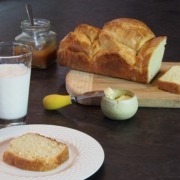
Nanterre Brioche
Equipment
- Greaseproof paper
- Loaf pan
- Food processr and brush (optional)
Ingredients
- 250 gr flour ideally all-purpose flour
- 210 gr butter
- 4 eggs : 3 150 gr for the dough + 1 for glazing
- 28 gr sugar
- 6 gr salt
- 15 gr milk
- 10 gr yeast either fresh baker’s yeast or 4 gr dried baker yeast
Important: All ingredients must be very cold (leave them in the refrigerator) until the last moment so that while kneading, the dough won’t become too warm and the texture remain as it should.
Instructions
- You can make this recipe with or without a food processor. I highly recommend the first option as the kneading process is quite long. Food processor speed instructions are given for those using Kitchen Aid.
- Put flour and sugar in the bowl of your food processor. It is often said that salt and yeast should not be directly in contact.
- Thus add on one side the salt and on the other the yeast (dried or fresh crumbled).
- Then add the milk and put your food processor on the lowest speed (Speed 1).
- Beat into a bowl the 3 eggs and add 2/3 of it in your preparation while keeping mixing. Knead this way for 2 minutes at low speed (speed 1). When the dough begins to pull away from sides of the bowl, add the remaining beaten egg and knead at medium speed (4) until the dough pulls away again from the sides of the bowl.
- While the food processor in on, cut the cold butter into small cubes and gradually add them into the preparation while keeping kneading.
- When all the butter is in, leave the food processor on medium speed (speed 4) for 7 minutes. Now you understand why it is better to make your brioche using modern devices!
- The dough must once more go away from the sides of the bowl. Then put it in a floured bowl and cover with plastic wrap (the plastic wrap must touch all the surface of the dough). Let stand for an hour at room temperature.
- An hour later, put your dough on a clean, floured surface and knead it (remove the air from it by flattening it with the palm of the hand or by stretching it between your hands).
- Wrap it in plastic and put it in the refrigerator half a day or night.
- The next day, flatten the dough on a clean, floured surface like the previous day and reshape a ball. Crush it a little to shape an oval. Cut it into three equal pats. You can opt for six smaller portions if you prefer. Prepare each small piece of dough the following way: crush it with the palm of your hand, fold each end in the center and then put it between your palms to form a ball.
- Cover your mold with greaseproof paper. Drop to three balls of dough. If you have made 6 balls, put them in two by two. Let stand again for 2 hours at room temperature.
- Preheat oven to 180 °C. Beat the last egg with a few drops of water and, using a brush (or more roughly with your fingers if you don’t have a brush), cover the top of the brioche.
- Bake at 180 °C for 45 minutes.
- You can use this recipe as a basic and follow your imagination to make the shape of your choice: braid crown, ball, individual portions … and add chocolate chips or sugar rocs. Instead of putting balls into a cake mold, just put your creations to rest the same way on greaseproof paper. However the baking time may slightly change, depending on the thickness of your brioche.
Notes
Bon appétit !
